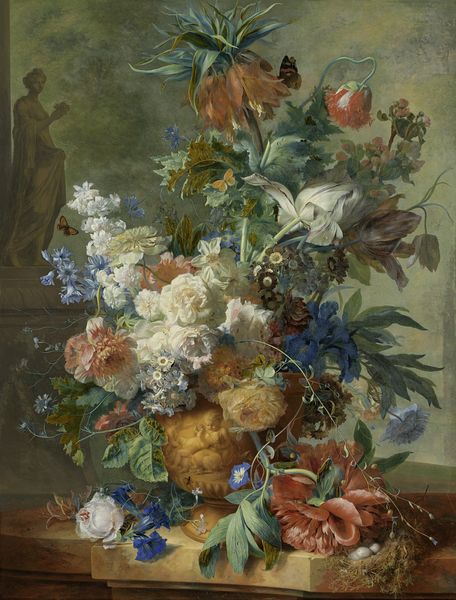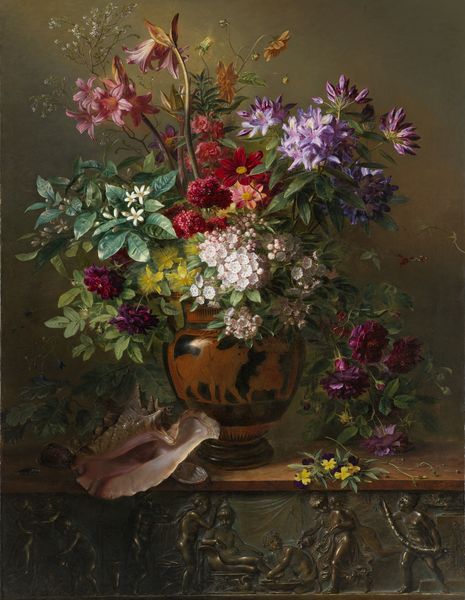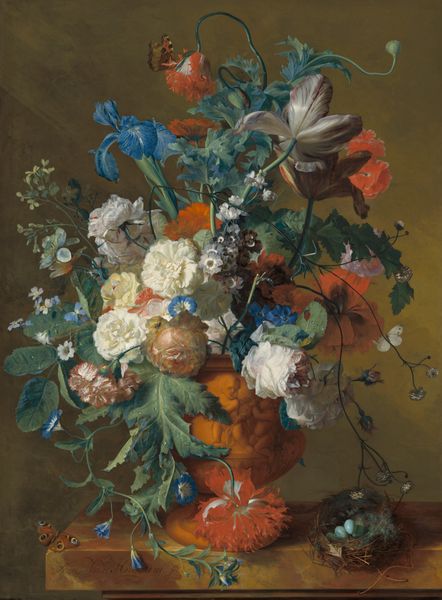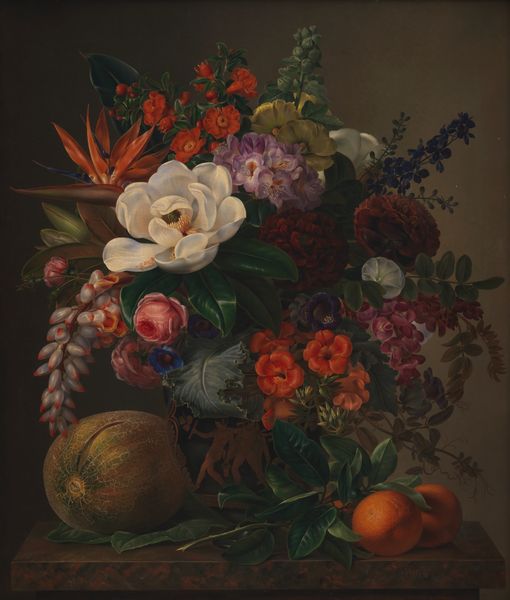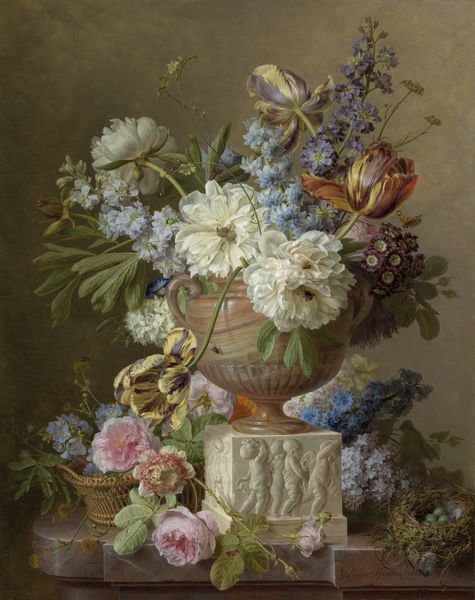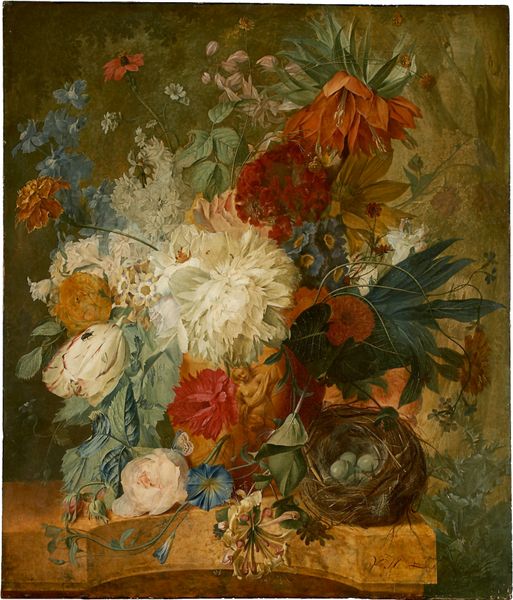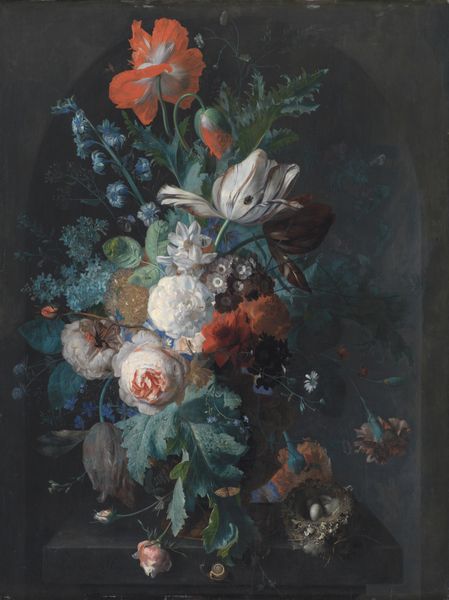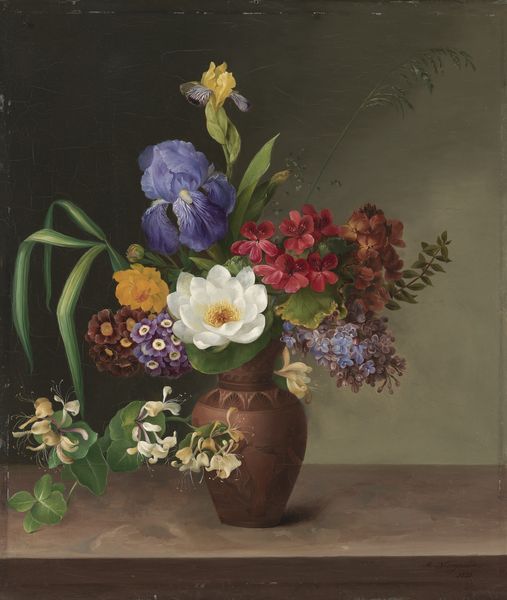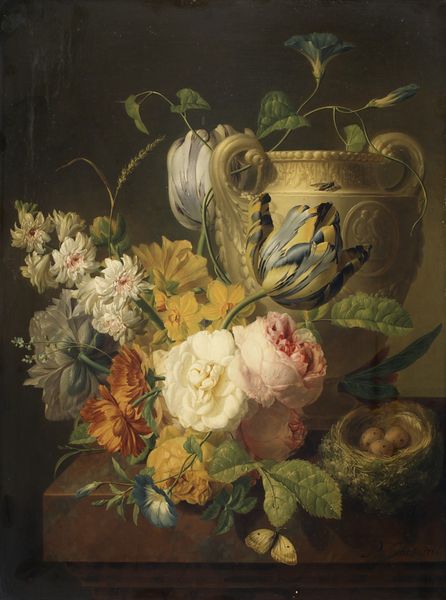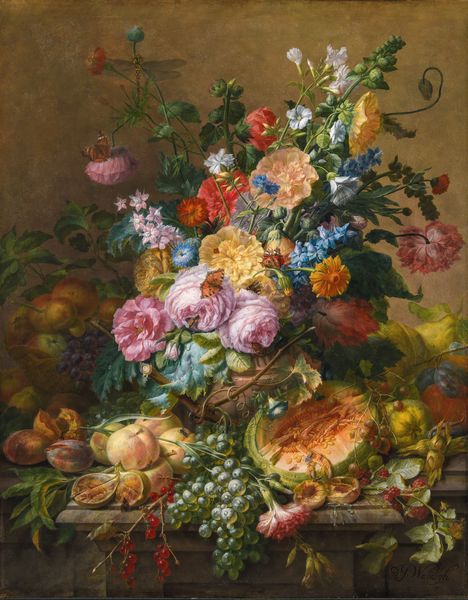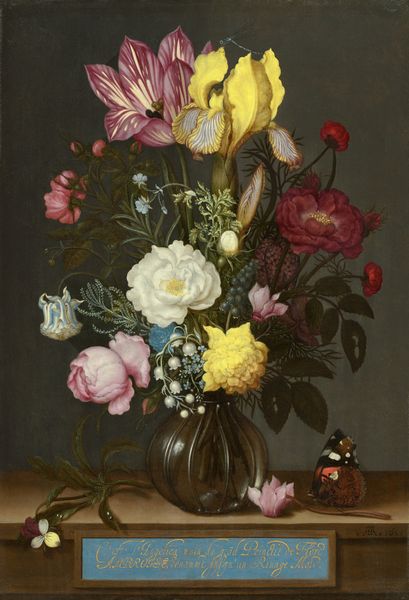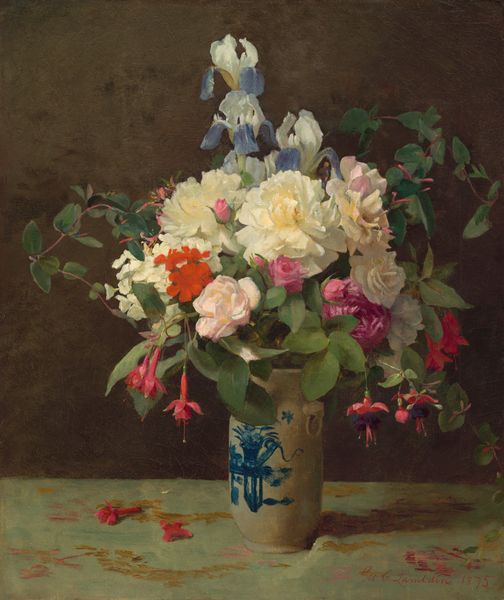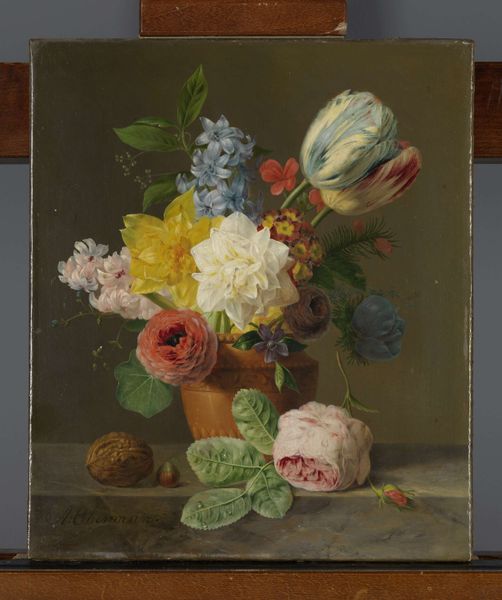
oil-paint
#
oil-paint
#
figuration
#
oil painting
#
romanticism
#
realism
Dimensions: height 67 cm, width 52.5 cm, depth 8.5 cm
Copyright: Rijks Museum: Open Domain
Editor: This is "Flowers in a Terra Cotta Vase" painted by Albertus Jonas Brandt sometime between 1810 and 1824, using oil paint. It feels quite classical, in a way, but also vibrant. What stands out to you when you look at this piece? Curator: Immediately, I see a dialogue between life and stillness. These flowers, painted with such detail, speak of life's ephemeral beauty. Consider how different cultures and eras have assigned meanings to flowers. Do you think Brandt was simply capturing their likeness, or suggesting something deeper? Editor: I guess I hadn't thought about it that way. Maybe the specific types of flowers are important? Like, what did a rose symbolize back then versus today? Curator: Exactly! Roses, for instance, have carried connotations of love and beauty for centuries. Lilacs, the more fragile lavender blooms, might represent first love or perhaps a farewell. And note the Poppy: depending on the context, it speaks to sleep, death, or remembrance. See how Brandt uses them— their position in the composition and relationship to the light? It seems to intentionally disrupt what would be just another "pretty picture." Editor: It does feel like more than just decoration. All the flowers in the vase leaning this way and that also feels very deliberate and carefully curated as an effect of 'realism', not simply realistically portrayed. Curator: Precisely. There's a psychological weight in the choices he's making. The somewhat muted tones, too, hint at a melancholic undercurrent despite the profusion of blooms. Do you find this realism ties into the themes of Romanticism in its emphasis on emotion? Editor: That's an interesting point! The romantic period focused so much on nature and emotion... it really does all come together when you look at it through that lens. Thanks, I’ve learned a lot! Curator: It's always enlightening to rediscover these connections, how an image can echo across time and touch upon our shared cultural memory.
Comments
No comments
Be the first to comment and join the conversation on the ultimate creative platform.
